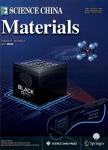Monitoring magnesium degradation using microdialysis and fabric-based biosensors
Monitoring magnesium degradation using microdialysis and fabric-based biosensors作者机构:Faculty of Biosciences and Medical Engineering Universiti Teknologi Malaysia Faculty of Science and Technology Universiti Kebangsaan Malaysia Department of Biomedical Engineering Faculty of Life Sciences and Technology Swiss German University Instituto de Microelectrónica de Barcelona (IMB-CNM) CSIC Campus UAB Department of Mining Metallurgical and Materials Engineering & CHU de Québec Research Center
出 版 物:《Science China Materials》 (中国科学(材料科学(英文版))
年 卷 期:2018年第61卷第4期
页 面:643-651页
核心收录:
学科分类:08[工学] 0805[工学-材料科学与工程(可授工学、理学学位)] 0702[理学-物理学]
基 金:supported by the Malaysian Ministry of Education the Natural Sciences and Engineering Research Council of Canada (NSERC)
主 题:biodegradable metal biosensor fabric device magnesium microdialysis
摘 要:This paper describes the development of a monitoring system capable of detecting the concentration of magnesium ions(Mg^(2+)) released during the degradation of magnesium implants. The system consists of a microdialysis probe that samples fluid adjacent to the implant and a catalytic biosensor specific to Mg^(2+)ions. The biosensor was fabricated on a cotton fabric platform, in which a mixture of glycerol kinase and glycerol-3-phosphate oxidase enzymes was immobilized on the fabric device via a simple matrix entrapment technique of the cotton fibers. Pure magnesium was used as the implant material. Subsequently, the concentration of ions released from the degradation of the magnesium specimen in Ringer s solution was evaluated using cyclic voltammetry technique. The device demonstrated a pseudo-linear response from 0.005 to 0.1 mmol L^(-1) with a slope of 67.48 μA mmol^(-1) L. Detectable interfering species were lesser than 1%indicating a high selectivity of the fabric device. Furthermore,the device requires only 3 μL of fluid sample to complete the measurement compared to spectroscopic method(±50 μL),hence providing a higher temporal resolution and reduced sampling time. The system could potentially provide a real time assessment of the degradation behavior, a new studied aspect in biodegradable metals research.



